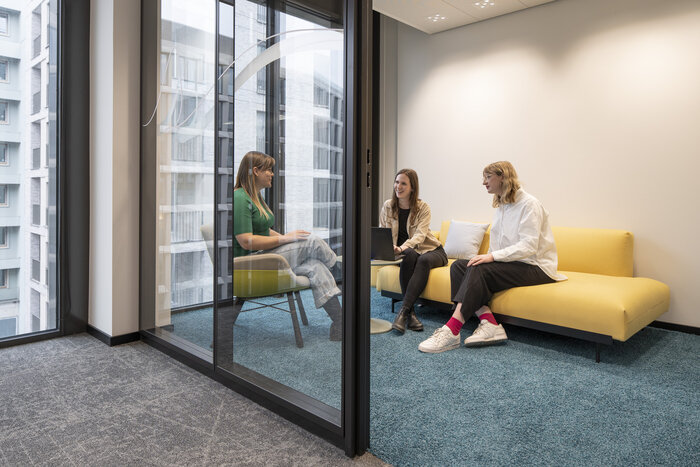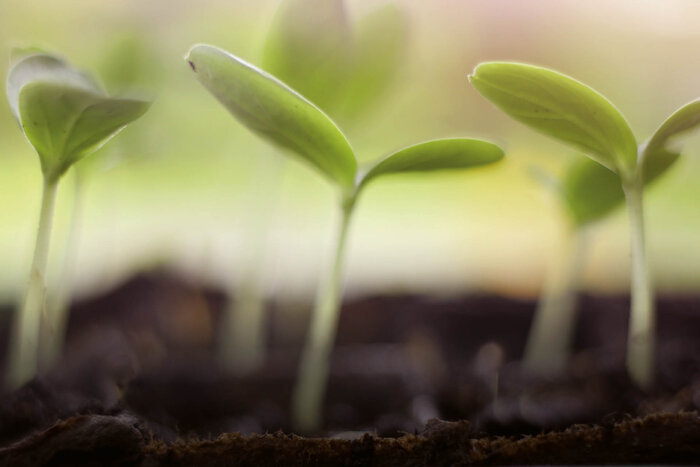Vertical green facade

For a long time, greened flat roofs were considered the ultimate in ‘cool’ among ecologically-conscious building owners. But now that PV systems are occupying this space more and more, façades are being seen as territory for plants and animals. In Stuttgart, experts have implemented this approach on an office building, despite a basis that was not quite so simple.
Benefits of facade greening
- Creates a better microclimate
- Filters pollutants to clean the air
- Insulates noise and provides better sound insulation
- Provides shelter for animals, thus promoting biodiversity
- Is promoted in many cities and communities
- Creates a feel-good atmosphere
Green facade
Green facades are not only an eye-catcher, but also provide many tangible benefits: for the animal and plant world, the microclimate and local noise control, for example. So it is no wonder that they are gradually making their way into city centers, areas that are increasingly affected by climate change. Yet you do get the feeling that it could happen a bit faster.
This hesitancy is not without reason. After all, anyone who is definitely interested in a green building façade would need to ask themselves some basic questions before taking the plunge. There is the cost issue, of course, but also some technical aspects of the supporting structure, watering and looking after the plants, and selecting them in the first place.
With an area of around 100 square meters, the greened façade of the OWP 12 office building in Stuttgart’s Vaihingen district is one of the larger planted exterior walls at present. Vertiko – a specialist firm based in the German city of Freiburg – whose name, not by coincidence, is reminiscent of a dizzying Hitchcock movie classic, has lent a hand with this project located to the south of Stuttgart, capital of the German federal state of Baden-Württemberg. The area planted in the summer of 2021 extends from the first floor to the edge of the roof above the third floor, and is a good eight meters in width.
Facade greening on the north side
Vertiko has been putting plants on walls and façades for years – sometimes small-scale, sometimes bigger. The special feature of the office building that Drees & Sommer itself uses is that the green area is on its north side. This is because a high-performance solar façade on the south side makes the building self-sufficient in terms of energy.
‘North side’ usually means more difficult conditions for plants. Every hobby gardener knows this. There is little or no direct sunlight, but often deep shadows, even if façades in the neighborhood sometimes reflect the light. All this has influenced the selection of plants at OWP 12. Hardy species for shady or ‘off-sun’ locations are mainly used, including Bergenia with its round fleshy leaves, or elegant grasses (Carex). The overall picture is painted by the decorative effect of the changing leaf colors over the year, rather than the inconspicuous blossoms.
Facade greening with a system
Not all façade greening is the same. For example, ground-based systems (i.e. creepers or climbing plants) are available, depending on local conditions and the building owner's goals. However, OWP 12 uses a wall-mounted system. In other words, the entire vegetation-supporting layer hangs on the wall and is not connected to the ground. In this case, Drees & Sommer and Vertiko used a flat construction method. This means that prefabricated planting modules do not stick out in front of the façade. This in turn has allowed a more individual design.
Structurally, the system is designed as a combination of pocket-like geomembranes and knitted fabric that acts as a substrate substitute. The entire layout is in rows, along which the watering system also runs. The experts have also made further progress in developing fire safety on this green façade with the result that, in future, it will be possible to plan regardless of area and size.
Maintenance of facade greening
A tricky part in any kind of façade planting is the supply of water to the greenery. The right amount and dosage appropriate to the location are both needed. Water for the plants at OWP 12 comes from a rainwater cistern system on the roof. Under the fully automatic control of a computer, it finds its way into the plant pockets through various pipes. Those plants that need a little more moisture are positioned further down the façade. Plants surviving in a water-limited environment are more likely to be placed at the top. The system can be monitored online in real time.
The second cost factor is usually looking after the plants. For this, however, the system has a type of built-in brake on costs: the dense planting and the tightly-packed plant pockets, almost completely enclosed, allow hardly any room for ‘foreign growth’, also known as weeds. As a result, plant care is limited to clearing out withered shoots and pruning old foliage twice a year.
Even at this stage, in the fall of 2021 and only a few weeks after planting, it can already be seen that a diverse green picture is emerging on the façade of OWP 12. The planting plan seems to be working – and nature is finding its way in.


